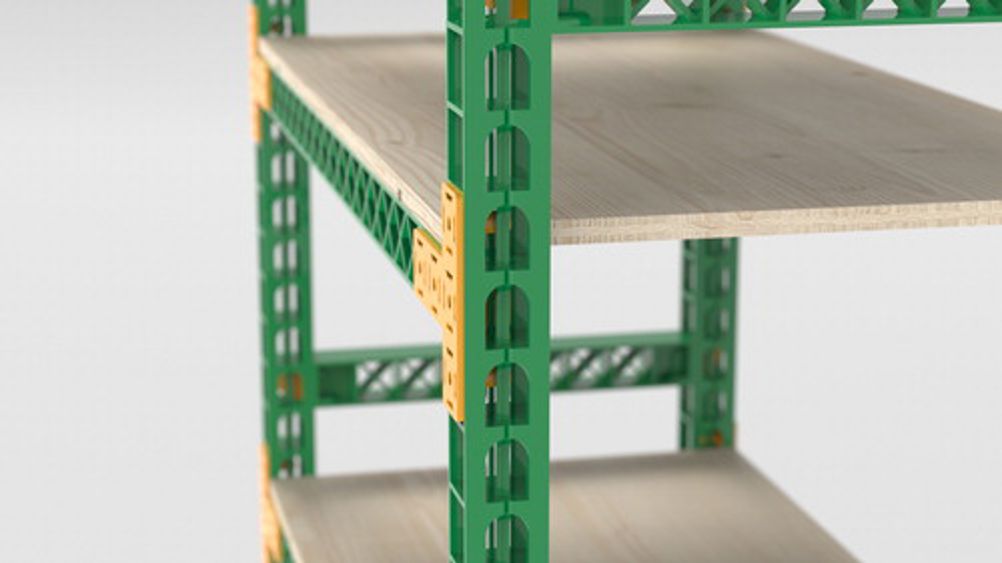Sustainable design
High-performance plastics offer enormous advantages in this area: they combine strength and durability with low weight, can be used in a variety of ways and, thanks to alternative raw materials, can contribute significantly to reducing the carbon footprint.
BASF recently worked with award-winning Spanish designer Inma Bermúdez to develop a modular concept shelf made with wood and glass fiber reinforced thermoplastic. All plastic elements are expandable and interchangeable and each shelf can carry up to 100 kg.
In series production, the product could be made with renewable raw materials to replace the current fossil-based raw materials, BASF said.
“Sustainability starts right at the beginning of a new product – with the design,” said Bermúdez. “Sustainable design enables an efficient production process with minimal use of raw materials, which reduces the product's carbon footprint. By using materials that can be reused, repaired, and easily recycled, we have created a truly sustainable product.”
Creative center
Bermúdez and her partner Moritz Krefter drew their inspiration for the design of the Otto shelf from architecture, specifically bridge construction and were helped by a team at the BASF creation center based in Ludwigshafen, Germany. The creation center is staffed by industrial designers, material and simulation experts.

“At the beginning, the main idea was to create a sustainable heavy-duty shelf that makes the most of the advantages of high-performance plastics,” said Eva Höfli, industrial designer at the center. “When talking to Studio Inma Bermúdez, it quickly became clear that they not only shared our vision of sustainable furniture design but were also striving for a sophisticated design. To achieve this, we worked closely with our simulation colleagues, material experts and 3D printing colleagues. That's how we were able to unite everything in OTTO: functionality, sustainability, and design.”







